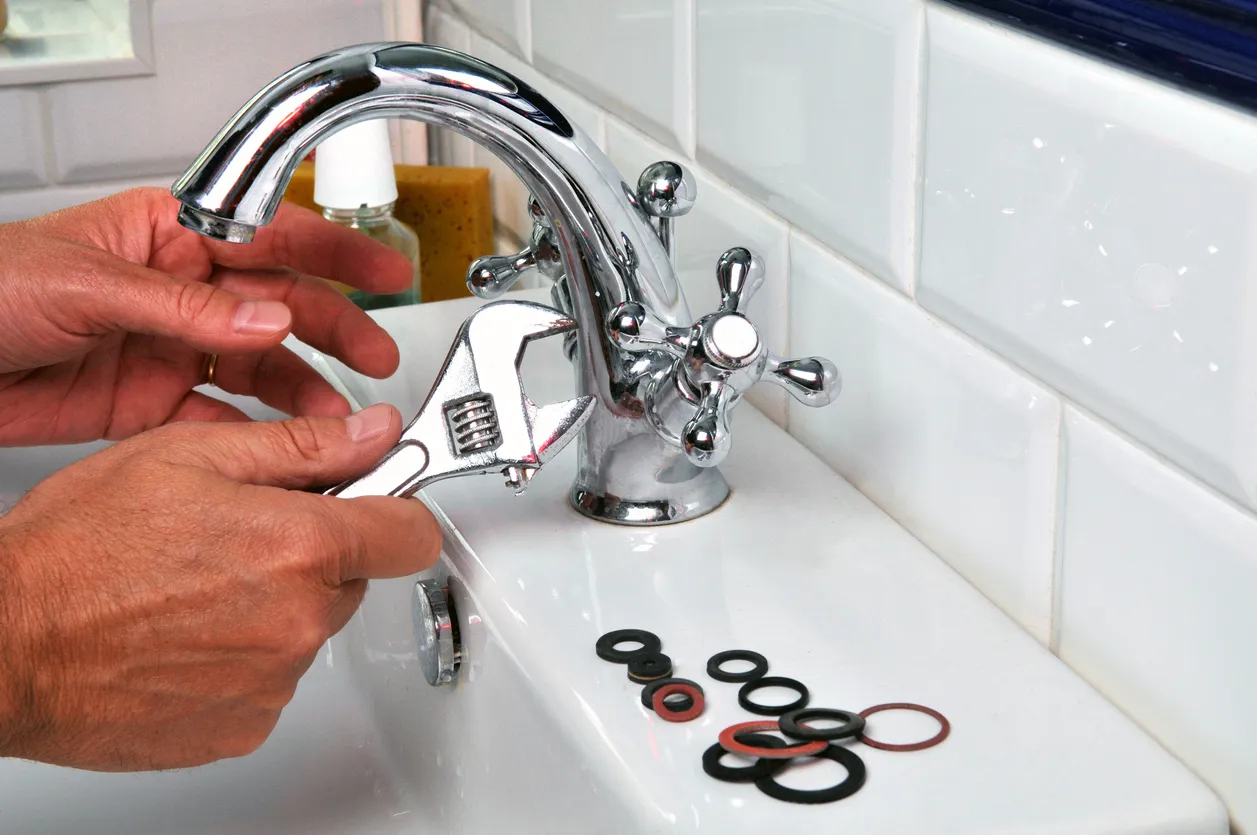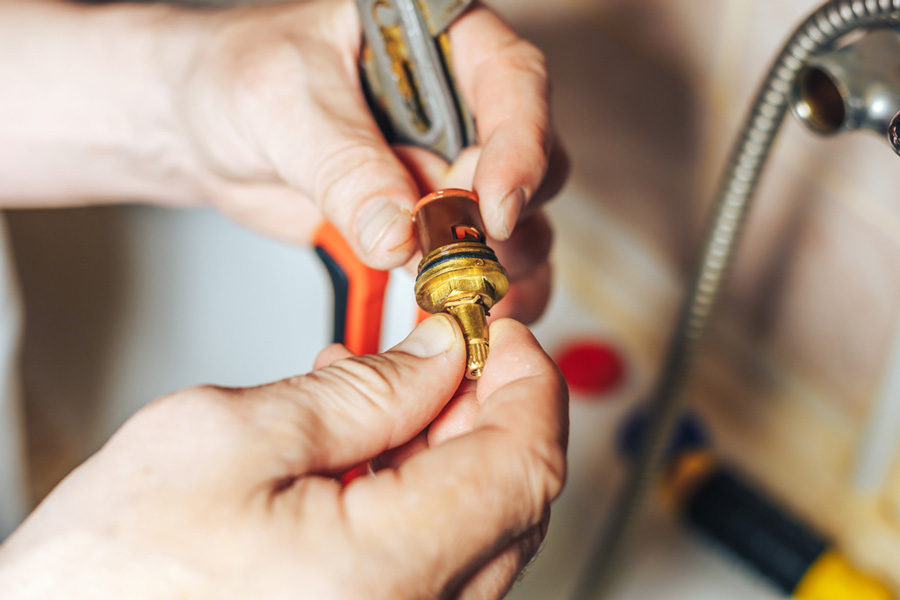Discovering the Significance of Dealing with a Dripping Faucet
Discovering the Significance of Dealing with a Dripping Faucet
Blog Article
What are your thoughts on Leaky Faucets: Why They Happen & What to Do About Them?

Dripping faucets might seem like a small trouble, however their effect exceeds just the annoyance of the sound. From drainage to sustaining unnecessary financial prices and wellness risks, overlooking a leaking tap can lead to numerous effects. In this write-up, we'll delve into why it's vital to resolve this common house problem quickly and effectively.
Waste of Water
Ecological Impact
Leaking taps contribute dramatically to water wastage. According to the Epa (EPA), a solitary faucet leaking at one drip per second can lose greater than 3,000 gallons of water per year. This not only stress water sources but additionally influences communities and wildlife depending on them.
Financial Prices
Raised Water Bills
Beyond the environmental impact, dripping taps can blow up water costs considerably. The accumulated wastefulness in time translates into greater energy costs, which might have been avoided with timely fixings.
Possible Building Damages
Furthermore, prolonged trickling can bring about harm to fixtures and surfaces bordering the tap. Water build-up can create discoloration, rust, and also architectural concerns if left neglected, leading to additional repair prices.
Health and wellness Concerns
Mold And Mildew and Mildew Development
The continuous presence of wetness from a dripping tap creates an excellent atmosphere for mold and mildew and mildew development. These fungis not only endanger indoor air top quality but likewise pose health and wellness threats, particularly for individuals with breathing conditions or allergies.
Waterborne Diseases
Stagnant water in dripping faucets can end up being a breeding place for bacteria and other virus, boosting the danger of waterborne conditions. Contaminants such as Legionella microorganisms thrive in stagnant water, possibly bring about significant ailments when consumed or inhaled.
DIY vs. Expert Fixing
Benefits and drawbacks of DIY Repair
While some might attempt to deal with a leaking tap themselves, do it yourself repairs include their own collection of challenges. Without appropriate knowledge and tools, DIY efforts can aggravate the issue or bring about insufficient fixings, prolonging the problem.
Advantages of Hiring an Expert Plumber
Employing a professional plumber ensures that the underlying source of the leaking tap is attended to efficiently. Plumbers have the know-how and equipment to detect and repair faucet concerns successfully, conserving time and lessening the danger of additional damages.
Step-by-Step Overview to Fixing a Dripping Tap
Tools Needed
Before attempting to deal with a leaking tap, collect the needed devices, including a flexible wrench, screwdrivers, replacement parts (such as washers or cartridges), and plumber's tape.
Typical Tap Issues and Their Solutions
Determine the sort of tap and the details problem causing the drip. Typical problems include damaged washing machines, rusty shutoff seats, or damaged O-rings. Refer to maker directions or on the internet tutorials for step-by-step advice on fixings.
Safety nets
Normal Maintenance Tips
To prevent dripping taps, perform routine upkeep such as cleaning aerators, examining for leakages, and replacing worn-out parts without delay. In addition, consider installing water-saving devices or upgrading to more efficient components.
Relevance of Prompt Services
Addressing trickling taps as soon as they're noticed prevents more water waste and potential damages, ultimately conserving both water and money in the long run.
Influence On Residential Or Commercial Property Worth
Understanding of Well-Maintained Residential Or Commercial Property
Keeping a property in good condition, consisting of addressing maintenance issues like trickling taps, improves its regarded value and desirability amongst prospective purchasers or tenants.
Influence on Resale Worth
Properties with well-kept plumbing fixtures, including taps, command greater resale values in the realty market. Attending to trickling taps can contribute to a favorable impact throughout home inspections and negotiations.
Ecological Duty
Private Contribution to Conservation
Taking responsibility for fixing trickling taps straightens with more comprehensive efforts towards water preservation and environmental sustainability. Every person's actions collectively make a significant influence on maintaining precious resources.
Sustainable Living Practices
By prioritizing prompt repair work and embracing water-saving habits, individuals add to sustainable living techniques that benefit both existing and future generations.
Conclusion
Resolving a leaking tap exceeds plain benefit; it's an important step towards preserving water, decreasing economic costs, and protecting health and wellness and residential or commercial property. Whether with do it yourself fixings or professional assistance, taking action to repair leaking taps is a small yet impactful method to promote responsible stewardship of resources and add to a much healthier, more lasting future.
How to Fix a Dripping or Leaky Faucet
A leaking faucet is one of the most common problems that homeowners encounter, but it being commonplace doesn’t make it any less annoying. The constant drip drip drip of a leaking bathtub faucet, showerhead, or sink tap can disturb your home’s serenity. Left neglected, a dripping faucet can also result in higher water bills and discoloration or mold growth in your sink or plumbing fixtures.
Fortunately, you don’t have to be a trained plumber to know how to stop a dripping faucet. With some basic tools, replacement parts, and a little patience, leaky faucet repair is a breeze. In this article, we’ll explain what causes dripping faucets and how you can fix them.
What Causes a Leaking Faucet?
Kitchen and bathroom faucets come in all manner of designs, but most involve some combination of valves, O-rings, seals, and washers. The O-ring is usually the weakest link, but any one of these pieces can wear down over time. Heat, moisture, temperature fluctuations, minerals, mold, and movement can contribute to warping and corrosion, breaking the watertight seal. This just comes with the territory of being a homeowner. Everything is always subject to wear and tear, and some component parts of your appliances and fixtures need to be replaced on occasion. At least replacement O-rings are cheap!
More rarely, dripping faucets can be a symptom of excessively high water pressure. Were this the case in your home, you would probably notice that the leak is not isolated to one faucet. Water pressure issues are harder to resolve on your own. We recommend contacting a professional plumber if you suspect your water pressure is too high.
How to Fix a Dripping Faucet
Pipe wrench or monkey wrench Allen wrench set Screwdrivers Old towel or rag Shut off the water.
Before you do anything, you need to turn off the water to keep from drenching your kitchen or bathroom. You should find a valve under the sink and against the wall. Once you’ve turned this valve, try turning the faucet on to confirm that the water source has been cut off.
If you can’t locate your local valve for the faucet you’re working on, you can always shut off the water to the house at the main valve. Of course, this will prohibit anyone from using the sinks, showers, or toilets while you’re working on the faucet that’s giving you trouble.
Plug or block the drain.
You’ll be disassembling the faucet and removing some small bits of hardware. Plug the drain with a stopper or rag to avoid the possibility of a small screw falling into your P-trap.
Take apart the faucet assembly.
There are several varieties of kitchen and bathroom faucets, each with its own manner of assembly. For detailed instructions on how to disassemble your faucet, you can refer to the fixture’s manual or contact the manufacturer. If you know whether you have a ball, disc, cartridge, or compression faucet, you can find detailed schematics online.
In general, you need to begin by removing the faucet handles. You might notice a small screw that you’ll need to remove with a screwdriver or Allen wrench. If you don’t see any visible securing hardware, it’s likely hidden under a decorative cap that can be unscrewed or popped off with flathead screwdriver.
Remove each piece methodically, consulting a schematic when necessary. Take notes or arrange the pieces in such a way to make it easier to correctly reassemble the faucet later.
Remove the cartridge.
Once you’ve removed the handles and securing hardware, you should be able to remove the valve cartridge or stem. Some cartridges will slide right out. Other faucet models will require you to loosen a nut with a pipe wrench before you can remove the valve stem.
Examine the exposed hardware.
With the cartridge or stem removed, inspect the component parts. Check the rubber O-rings for wear and tear. Also examine the seat washer for corrosion or other damage. These pieces are usually the responsible parties for a dripping faucet, but it’s worth inspecting the other component parts while you have the faucet disassembled.
Find replacement parts.
Once you’ve identified which faucet component has failed, find an identical replacement. Your local hardware store should have O-rings, seat washers, and other standard components in stock. If you have a luxury or uncommon faucet, you may have to contact the manufacturer for a replacement part.
It’s a good idea to take your old parts with you to the hardware store so you can compare them with the store’s inventory and be sure you’re purchasing the correct replacement.
Reassemble the faucet.
With your new parts in hand, reconstruct the faucet and handles. Don’t be tempted to overtighten screws or nuts. You might think this could create a better seal, but it can instead damage or bend a delicate part of the assembly and create a new problem for you.
Turn on the water and test the faucet.
The only thing left to do is test your work. Unplug the sink, turn the water back on, and try the faucet. Congratulate yourself on a job well done!
https://www.libertyhomeguard.com/how-to-fix-a-dripping-or-leaky-faucet/

As a devoted person who reads on Leaky Faucets: Why They Happen & What to Do About Them, I imagined sharing that piece of writing was really helpful. Sharing is nice. One never knows, you may be doing someone a favor. We appreciate your readership.
Report this page